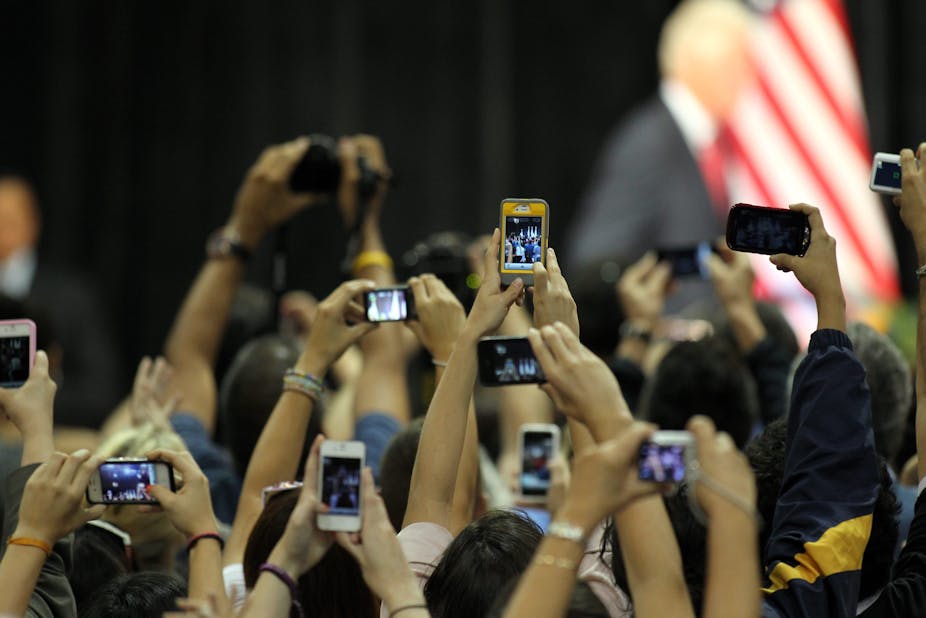Many people have expressed their outrage at recent revelations concerning the United States’ PRISM program, linking it to the overpowering gaze of Big Brother.
The PRISM program is rightly a subject of considerable concern. It is also important to recognise that while supercomputers and digital technologies have allowed surveillance of the public to occur constantly, surveillance has a long history.
Surveillance and history
Surveillance is described by sociologist David Lyon as:
…the focused, systematic and routine attention to personal details for purposes of influence, management, protection or direction.
The Bible contains specific references to surveys and censuses, perhaps indicating the first organised attempts to collect and analyse citizen’s data. This is also seen in later endeavours of the Domesday Book and the Magna Carta.
Everyday surveillance is not an exclusively technological phenomena either, although today we often associate it with CCTV, ID cards, or other electronic devices. In the past, the monitoring of populations fell to the gaze of individual citizens, given to those with the moral authority to do so (such as a religious figure), or to the community itself.
The notion of a “small town” environment, where everyone knows everyone else’s business is at its core about surveillance. The monitoring of the behaviour of all those granted rights or association under a social body is conducted by the community itself.
Within modernity, surveillance finds itself implicated in a number of interesting social processes. Bureaucracies, capitalist economies and nation-states, possess an insatiable drive for efficiency, productivity, and performance. These desires provide a strong motivation to collect vast amounts of data, such as official documents, reports, and files concerning a specific individual or topic.
Examples can be found in Christopher Dandeker’s work on military history, and in the writings of James B. Rule, who arguably conducted the first research as a part of what we now call surveillance studies. Their work continues to hold currency - one need only visit a government agency to find out.
The electronic eye: ICTs and surveillance
Today, the scope and ability of surveillance processes have come to infiltrate nearly all aspects of social life, largely thanks to information and communication technologies. The computer, internet and database have allowed enormous amounts of information to be collected, stored, analysed, and circulated.
There is also now the ability to [create](http://www.lavoisier.fr/livre/notice.asp?ouvrage=1421271](http://www.lavoisier.fr/livre/notice.asp?ouvrage=1421271) predictive models and simulations from this data. Much of this digital surveillance occurs through every day, mundane activities.
Surveillance researcher Mark Andrejevic provides a fascinating account of how simple tasks, such as using a rewards card, are surveillance processes. Enormous data sets concerning an individual’s behaviour and social history can be generated through the computerised processes of “big data”. Social trends such as these drive an economy based on the collection, storage and circulation of personal information. Much of this information is derived from the internet.
Although many people know some data are collected while surfing the internet, the true extent is quite alarming. Companies such as Google and Amazon collect vast amounts of personal information, including tracking user behaviours. You really didn’t think Google would offer you its services for free did you? Google mines your personal information for its own benefit.
And Google isn’t the only group to do so. Internet tracking and monitoring is very common. Installing Mozilla’s Collusion extension helps to get a sense of the data being harvested as you browse.
In the face of operations like PRISM, it is important to recognise that surveillance has been, and will continue to be, a part of society. This does not at all preclude it from moral critique or judgement. In fact, this is the very reason why we need to fully engage with and interrogate surveillance practices.
An important part of that will be that while continuing to recognise the long and ongoing relationship between society and surveillance, keeping a watchful eye on its electronic reach is also needed.

